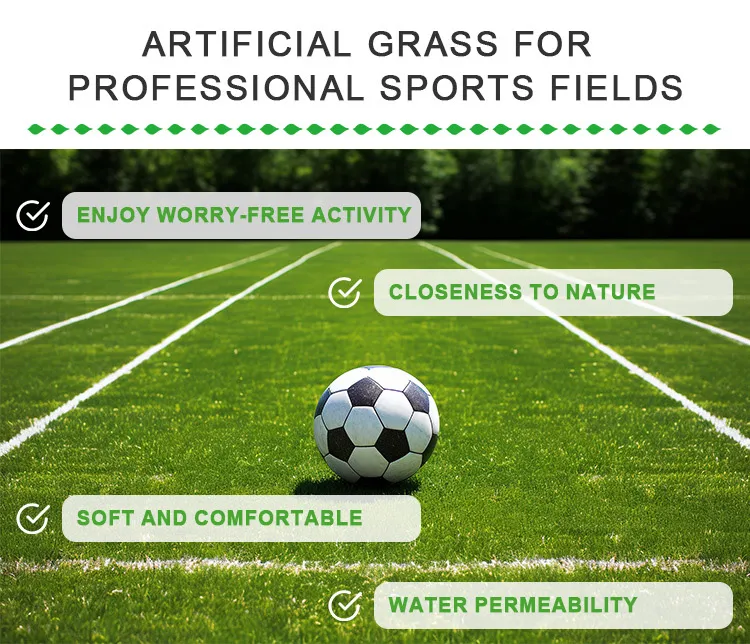
- Afrikaans
- Arabic
- Belarusian
- Bengali
- Czech
- Danish
- Dutch
- English
- Esperanto
- Estonian
- Finnish
- French
- German
- Greek
- Hindi
- Hungarian
- Icelandic
- Indonesian
- irish
- Italian
- Japanese
- kazakh
- Rwandese
- Korean
- Kyrgyz
- Lao
- Latin
- Latvian
- Malay
- Mongolian
- Myanmar
- Norwegian
- Persian
- Polish
- Portuguese
- Romanian
- Russian
- Serbian
- Spanish
- Swedish
- Tagalog
- Tajik
- Thai
- Turkish
- Turkmen
- Ukrainian
- Urdu
- Uighur
- Uzbek
- Vietnamese
Understanding the Costs of Turf Football Field Construction and Maintenance
Dec . 10, 2024 23:19 Back to list
The Cost of Turf Football Grounds A Comprehensive Overview
When it comes to football, the quality of the playing surface can significantly impact performance. As a result, an increasing number of clubs, both professional and amateur, are opting for turf football grounds. These synthetic surfaces offer several advantages, including durability, consistency, and reduced maintenance costs compared to natural grass. However, the initial investment for installing a turf pitch can be substantial. In this article, we will delve into the various costs associated with developing a turf football ground, the potential financial returns, and the long-term implications of such investments.
Initial Investment Costs
The initial cost of installing a turf football ground can vary widely based on multiple factors, including the type of turf used, the size of the pitch, geographical location, and labor costs. On average, the installation of a high-quality turf football pitch can range anywhere from $500,000 to $1.5 million. The lower end of this range typically involves basic turf options, while the higher end is associated with premium materials with advanced features like shock pads and longer-lasting fibers designed for high-level competition.
One of the key factors that influence the overall cost is the type of turf chosen. In the market, synthetic turfs can be classified into several categories, including polyethylene, polypropylene, and nylon, each varying in cost and suitability based on the intended use. Clubs must carefully consider their specific needs, including playing frequency, climate conditions, and maintenance capabilities when selecting the type of turf.
Additional Costs to Consider
Beyond the base installation cost, there are a range of additional expenses that clubs should consider
. This includes1. Site Preparation Before turf can be installed, the ground must be adequately prepared. This may involve grading, drainage systems, and soil testing to ensure the surface can support the turf.
2. Maintenance and Repairs Although turf pitches generally require less maintenance than natural grass, they are not maintenance-free. Clubs should budget for regular maintenance, which may involve cleaning, brushing, and infill replacement to ensure the surface remains effective and safe.
turf football ground cost

3. Lighting and Spectator Amenities If the pitch will host night games, the club needs to invest in proper lighting. Additionally, seating and other spectator amenities can add to the overall cost of establishing a turf football ground.
Potential Financial Returns
While the initial investment in a turf football ground can be daunting, it can lead to significant financial returns over time. One of the primary benefits of turf fields is their increased availability. Unlike natural grass fields that may be unusable after heavy rain or through prolonged wear, turf fields can sustain more consistent play. This reliability can bolster revenue through increased match days, training sessions, and community events.
Moreover, turf fields tend to attract higher-profile matches and tournaments, as they are often seen as a more reliable choice for both players and organizers. This not only enhances a club's reputation but can also lead to increased ticket sales and sponsorship opportunities.
Long-term Considerations
When evaluating the cost of developing a turf football ground, clubs should consider the long-term implications of their investment. While the life expectancy of synthetic turf ranges from 8 to 15 years depending on usage and maintenance, the need for eventual replacement should be factored into the financial planning. Additionally, the environmental impact of synthetic turf, particularly concerning heat retention and microplastic pollution, remains a topic of discussion, and clubs may want to evaluate eco-friendly alternatives that are emerging in the market.
Conclusion
The decision to invest in a turf football ground is not one to be taken lightly. The initial costs can be significant, but the potential for increased revenue and improved player experience can outweigh these factors. Clubs must carefully evaluate their specific needs, budget, and long-term goals when making this investment. Ultimately, a well-planned and executed turf football ground can serve as a valuable asset to any football organization, paving the way for success both on and off the pitch.
-
The Benefits of Artificial Turf for Indoors
NewsJul.15,2025
-
How Artificial Grass Suppliers Ensure Quality Products
NewsJul.15,2025
-
Artificial Grass and Pets: A Space for Relaxation
NewsJul.08,2025
-
Balcony & Outdoor Decoration with Artificial Grass
NewsJul.08,2025
-
Best Indoor Artificial Grass for Home
NewsJul.07,2025
-
Best Pet Turf for Dogs: Safe & Durable Artificial Grass Options
NewsJul.07,2025
Products categories









